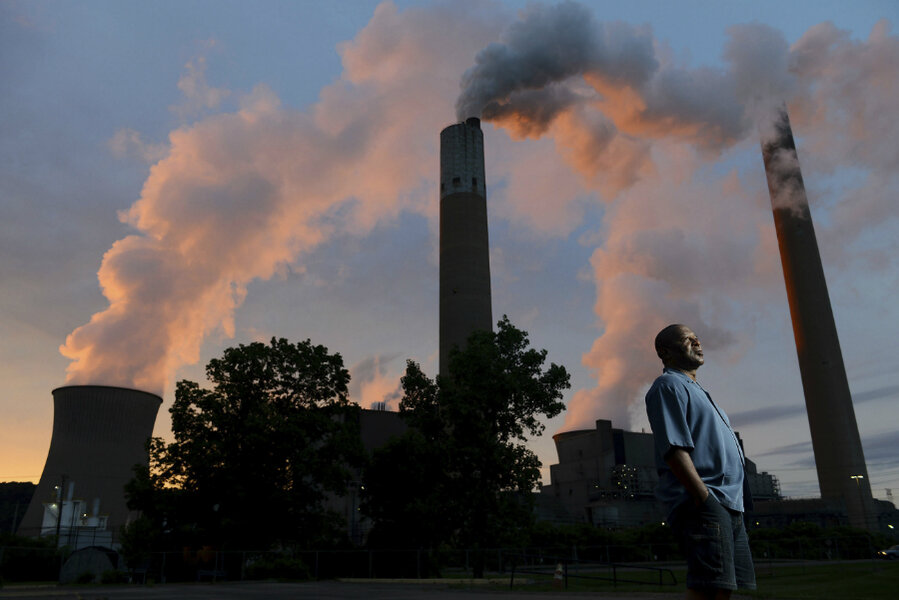Europe still wants American coal, boosting exports to new highs
Loading...
| Washington and London
US coal exports have jumped more than 60 percent this year due to soaring demand from Europe and Asia, according to a Reuters review of government data, allowing President Trump's administration to claim that efforts to revive the battered industry are working.
The increased shipments came as the European Union and other US allies heaped criticism on the Trump administration for its rejection of the Paris Climate Accord, a deal agreed by nearly 200 countries to cut carbon emissions from the burning of fossil fuels like coal.
The previously unpublished figures provided to Reuters by the US Energy Information Administration showed exports of the fuel from January through May totaled 36.79 million tons, up 60.3 percent from 22.94 million tons in the same period in 2016. While reflecting a bounce from 2016, the shipments remained well-below volumes recorded in equivalent periods the previous five years.
They included a surge to several European countries during the 2017 period, including a 175 percent increase in shipments to the United Kingdom, and a doubling to France, which had suffered a series of nuclear power plant outages that required it and regional neighbors to rely more heavily on coal.
"If Europe wants to lecture Trump on climate then EU member states need transition plans to phase out polluting coal," said Laurence Watson, a data scientist working on coal at independent think tank Carbon Tracker Initiative in London.
The EU's coal imports have generally been on a downward trend since 2006, albeit with seasonable variations like high demand during cold snaps in the winter, an EU source said.
Overall exports to European nations totaled 16 million tons in the first five months of this year, up from 10.5 million in the same period last year, according to the figures. Exports to Asia meanwhile, totaled 12.3 million tons, compared to 6.2 million tons in the year-earlier period.
Mr. Trump had campaigned on a promise to "cancel" the Paris deal and sweep away Obama-era environmental regulations to help coal miners, whose output last year sank to the lowest level since 1978. The industry has been battered for years by surging supplies of cheaper natural gas, brought on by better drilling technologies, and increased use of natural gas to fuel power plants.
His administration has since sought to kill scores of pending regulations he said threatened industries like coal mining, and reversed a ban on new coal leasing on federal lands.
Taking credit
Both the coal industry and the Trump administration said the rising exports of both steam coal, used to generate electricity, and metallurgical coal, used in heavy industry, were evidence that Trump's agenda was having a positive impact.
"Simply to know that coal no longer has to fight the government – that has to have some effect on investment decisions and in the outlook by companies, producers and utilities that use coal," said Luke Popovich, a spokesman for the National Mining Association.
Shaylyn Hynes, a spokeswoman at the US Energy Department, said, "These numbers clearly show that the Trump administration's policies are helping to revive an industry that was the target of costly and job killing overregulation from Washington for far too long."
Efforts to obtain comment from exporters Arch Coal and privately held Murray Energy Corp were unsuccessful. Contura Energy, which emerged as part of Alpha Natural Resource's bankruptcy and restructuring, and filed for public offering in May, declined to comment.
A spokesman for Peabody Energy, the largest coal producer, though without a major export profile, said the United States was generally a "swing supplier of seaborne coal."
US Energy Information Administration analyst Elias Johnson said the US coal industry may now be better positioned to meet foreign demand because US miners have learned to produce at lower cost, after coming through a series of recent bankruptcies.
"There's the possibility that the US will become more of a primary player in the global coal trade market," he said.
But he added there are also plenty of reasons the spike in demand could be temporary. For one thing, US coal production and transportation costs are much higher than for other producers such as Indonesia and Australia.
Because coal can often be transhipped from European ports before it is consumed, it is also hard to determine where shipments ultimately end up.
Johnson pointed out that some of the fuel shipped into Western Europe, for example, could be making its way to other places like Ukraine, which is having trouble securing coal from its separatist-held regions.
Trump said last month that his administration is offering more coal to Ukraine, but it was unclear how, given deals are typically worked out between companies.
This story was reported by Reuters.





